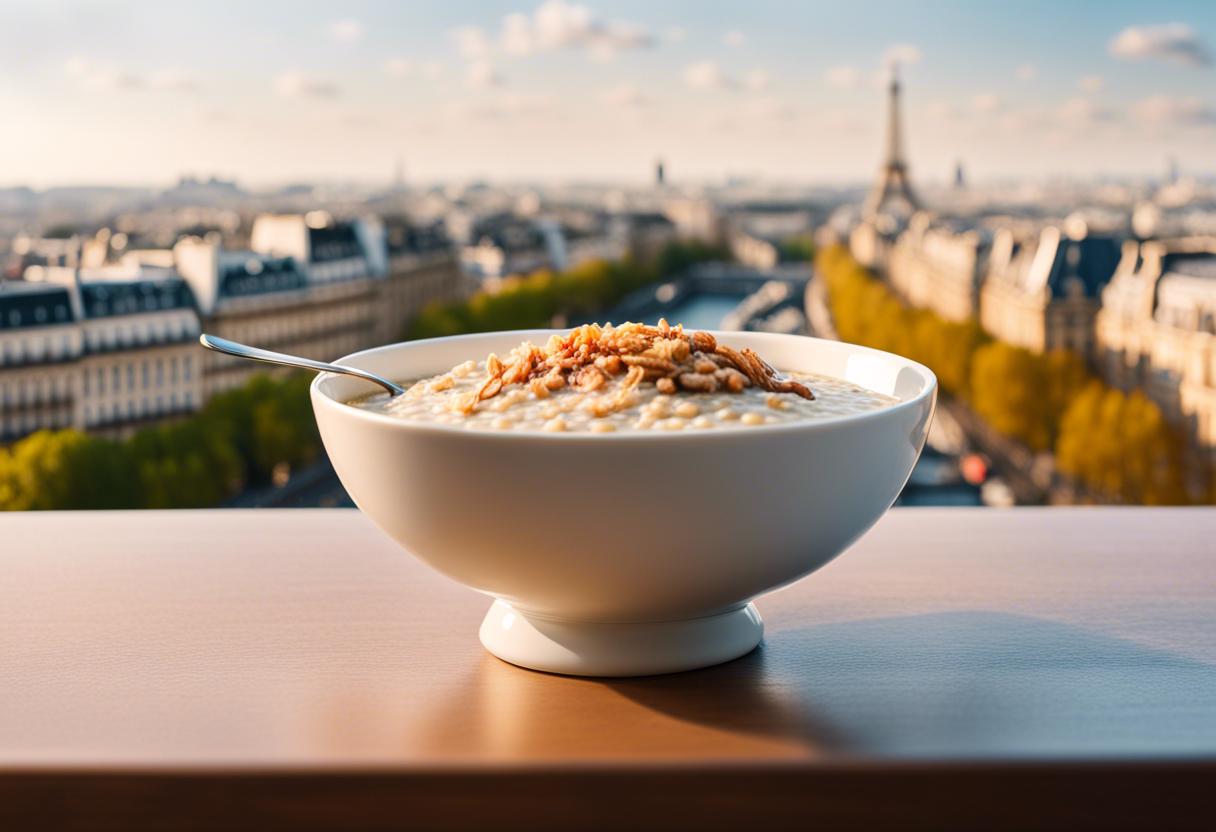An athlete’s initial encounter with the Olympic Village in Paris is set to be marked by the scent of freshly baked baguettes, rather than the imposing stature of the venue. These delicious smells are the purposeful design of the organisers, as pointed out by Paris Olympics communications officer, Guillaume Thomas.
In typical French tradition, a bakery will be stationed at the village entrance, providing over 2,000 baguettes, croissants, pain au chocolat and focaccia daily. Athletes looking for a break from the rigorous competition can also dabble in baking classes.
For the 15,000 sportspersons participating in the summer games, food plays an essential role for peak performance. The French organisers aim to infuse an element of pleasure in their diet.
The focal point of the vast Olympic village, previously utilised as a power plant and film studio, is a consortium of six restaurants open 24/7 to athletes. The organisers insist on referring to these as restaurants, avoiding past Olympics terminology of ‘dining halls’.
The restaurants are situated at the culmination of a grand promenade, adorned with flags representing every delegation, in a 46,000-square-foot complex that overlooks the River Seine. The interior resembles a university canteen, kitted out with cereal dispensers, soda fountains and buffets amongst kitschy decorations.
However, unlike a university canteen, three renowned French chefs – Akrame Benallal, Amandine Chaignot and Alexandre Mazzia – will create dishes such as coco beans with parsley ice cream and crispy mushroom croquettes. The staff will wear gavroche caps and polos, and athletes will enjoy cheese plates and French butter served on French porcelain, which will be cleansed in three massive dishwashers installed for the Games.
In the latter part of June, a tasting session was held for press by Sodexo Live, a French catering business responsible for supplying the Olympic Village. They sampled a whirlwind of culinary dishes to be provided, ranging from cool green gazpacho, to flavourful and rich saffron risotto, to slightly over-sweet financiers. However, the company faces a challenging task in maintaining a balance between promoting French cuisine and serving a stunning 40,000 meals per day that must meet a multitude of athletic, cultural and nutritional demands.
To ensure a sensitivity towards varying cultural tastes, Sodexo deployed 20 chefs from around the globe at the village’s six eateries. The selection included two French, two Asian, one halal and one simply labelled “world”.
One collaborator was nutrition expert Carole Galissant from Sodexo Live, who worked with other dietitians from a host of delegations to cater to specific culinary desires. For example, Koreans craved kimchi and Japanese were keen on miso. There were some requests, however, such as the desire for passion fruit from a few Caribbean nations, that couldn’t be accommodated due to the Games’ sustainability regulations preventing air transportation of ingredients.
“Although we are still pressing on French dishes,” stated Galissant. “Veal blanquette, lemon tart and Paris-Brest are certainly on the menu.”
Working with the Irish Olympic team is Sharon Madigan who looks after nutrition. She sees the event as an excellent chance for athletes to broaden their taste horizons with foods they would not typically sample and possibly develop a liking.
However, Madigan did have one stipulation: the Irish demand their morning bowl of porridge. “Porridge is something that the French aren’t particularly great at or simply don’t make,” she specified. “We will be bringing oats. A lot of them.”
Athletes are thrilled to socialise in the communal Olympic Village dining halls, a refreshing change from the confined dining experienced in Tokyo amid the pandemic. Fortuitously, the French are well acquainted with communal dining.
“In France, we emphasize conviviality, the act of communal eating, an integral part of an athlete’s overall performance,” commented Sodexo’s Galissant.
Yet, unfortunately, many athletes might not get the chance to enjoy some of the dishes on offer.
Purity Kamande, a Kenyan Olympic team nutritionist, suggests adhering to familiar food choices as much as feasible in order to alleviate potential adverse effects from unfamiliar foods. She has sent a hamper to Paris filled with Kenyan staples such as ugali, a cornmeal rich in carbohydrates, and the cherished Kericho Gold tea.
Shawn Hueglin, a well known sports dietitian for the USA Olympic Committee, states that the team has dispatched protein shakes, pretzels, popcorn, jerky, energy bars, and the American favourite, peanut butter, to their athletes in Paris. She has noticed that host countries often favour showcasing their national cuisine over catering to the specific dietary needs of the athletes, from her experience of four Summer Olympics, suggesting that this can interfere with athletic performance.
Fencing gold-medalist Brice Guyart, who has been providing guidance to athletes for the upcoming Paris Olympics, celebrated the dining experience at the Games, where all athletes, regardless of their nationality, can share a meal. He fondly recalls the late-night meal after winning gold at the Sydney Olympics in 2000 with Shinichi Shinohara, a Japanese judoka who bagged silver.
Based on his past experiences, Guyart offered several suggestions to the Sodexo Live team, such as preventing oversized servings to avoid overeating, maintaining a mild temperature to prevent diners from needing to wear coats indoors as was the case in Sydney and Athens, and celebrating athletes’ birthdays with cakes.
Guyart also cherishes the memories of a particularly delectable Greek salad he had at the Athens Olympics cafeteria, reminiscent of his gold-winning triumph, enhancing the culinary experience. One of the Village’s chefs, Benallal, aims to create similar evocative culinary experiences for the athletes in Paris.
Without a doubt, they require nourishment,” he stated. “Yet perhaps on occasion, they might even derive enjoyment.” – This piece first made its appearance in The New York Times, and is a product of The New York Times Company in 2024.

